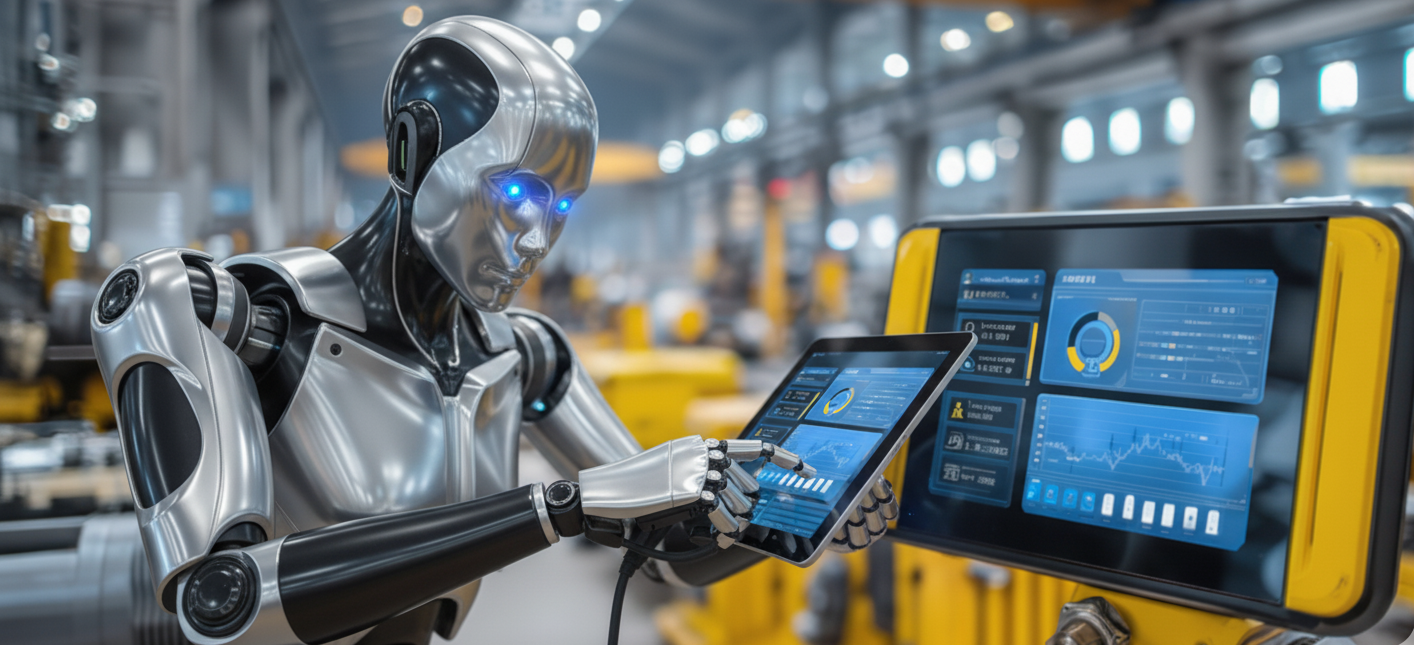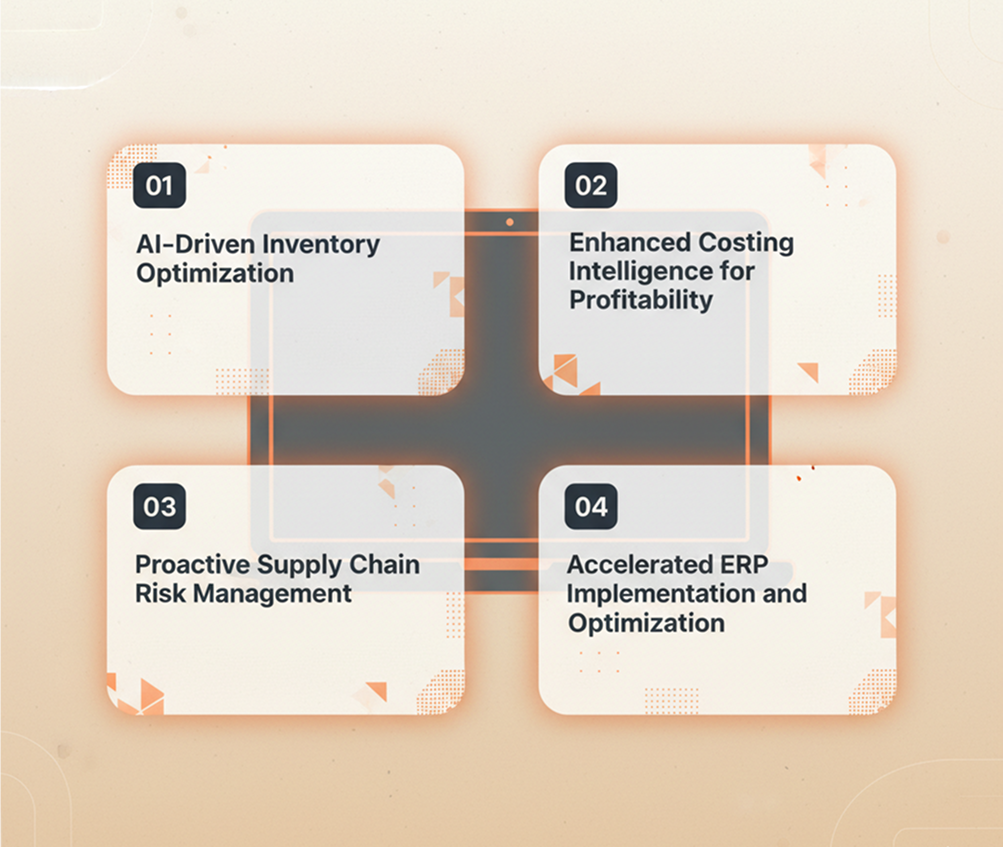Bots are running social media not humans.
you are being scammed, daily millions of bots do comments , likes etc.
AI technologies are revolutionizing factory floors worldwide, enabling smarter production processes, reduced waste, and mass customization at scale.


For more than ten years, the manufacturing sector has grappled with a baffling contradiction. Despite witnessing the emergence of game-changing innovations such as the Internet of Things (IoT), Industry 4.0, and sophisticated Big Data and Analytics solutions, productivity improvements have remained stagnant for the last decade and a half. This lack of progress has left professionals across manufacturing, supply chain, procurement, finance, and IT functions questioning whether the anticipated gains in efficiency and effectiveness will ever become reality. Significant capital has been deployed, new platforms have been implemented, vast quantities of data have been amassed, and digital transformation victories have been widely proclaimed (particularly across LinkedIn feeds), yet measurable productivity improvements remain frustratingly elusive. These digital initiatives have consistently fallen short of their ambitious promises.
What explains the failure of these technological breakthroughs to deliver meaningful results? And perhaps more critically, how will Artificial Intelligence (AI) succeed where others have failed, fundamentally reshaping the manufacturing industry?
Let's confront an inconvenient reality: the excitement generated by earlier industrial transformations typically exceeded their tangible outcomes—the outcomes that would justify such substantial investments for manufacturers. IoT successfully linked our equipment and sensors, creating massive amounts of data, yet we frequently lacked the advanced capabilities to derive meaningful, practical intelligence from it. Industry 4.0 presented an ambitious blueprint for intelligent factories, but achieving seamless integration across fragmented systems became an overwhelming obstacle. Big Data and Analytics offered the means to handle enormous datasets, but the domain expertise and intensive labor needed to refine, analyze, and apply this information for strategic purposes created a major constraint.
The fundamental problem wasn't insufficient data—it was the absence of sophisticated intelligence to genuinely comprehend and respond to it in a flexible, self-directed manner. We constructed robust infrastructures, but continued depending on human operators to chart courses through complicated landscapes while visibility remained obscured. This frequently resulted in delayed responses, hidden inefficiencies buried beneath data overload, and consequently, squandered opportunities for productivity enhancement. The potential for connectivity and data-informed decision-making existed, but converting that potential into consistent, meaningful progress proved difficult to achieve. Artificial Intelligence represents what I believe will be a foundational transformation in our approach to manufacturing obstacles.
AI represents more than just another technological advancement; it signifies a complete transformation in approach. Unlike previous innovations, AI goes beyond merely gathering data or linking equipment; it comprehends, evolves, and executes intelligent choices. It requires training, infrastructure development, and specialized knowledge to unlock its value, but it delivers the cognitive power that has been the crucial missing element in converting massive data volumes into measurable productivity improvements. AI can detect patterns, forecast results, and refine processes with a velocity and precision that no human team, regardless of expertise, can replicate. This isn't about displacing human creativity, but rather enhancing it, liberating valuable human resources for more sophisticated, strategic responsibilities.
The sheer quantity of data generated within a contemporary manufacturing facility is overwhelming. From equipment sensor outputs on assembly lines to stock quantities, logistics tracking, and demand projections – the intricacy is immense. Earlier technologies enabled us to capture this information, but AI delivers the computational strength to genuinely leverage it. It propels us beyond retrospective reports detailing what occurred, toward analyses explaining why events unfolded. The ultimate objective, naturally, will be insights revealing what will transpire, or ideally, "here's what was about to occur, but AI took corrective action to avert the issue." This transition from interpreting history to actively influencing outcomes is what positions AI as a transformative force for manufacturing. It's about anticipation versus reaction, wisdom versus mere awareness.
The critical distinction resides in AI's capacity to learn, evolve, and execute intelligent choices, introducing a cognitive dimension absent from earlier technologies. While IoT linked equipment and produced data, and Big Data offered methods to handle extensive datasets, they lacked the sophistication to genuinely comprehend and respond to this information in a flexible and independent manner. AI transcends simple collection and processing; it supplies the analytical capability to harness it, transitioning from historical analysis to influencing future outcomes through predictive and prescriptive analytics. This is precisely why AI represents a watershed moment for manufacturing, facilitating anticipatory, intelligent decision-making and releasing substantial productivity potential.
In the two months preceding this article's composition, I have directly heard senior executives at manufacturing companies articulate these perspectives:
"We must understand AI's potential impact on our operations.""We are investigating how AI can eliminate routine work from our purchasing staff.""We plan significant AI expenditures in the coming year."
The conversations surrounding Artificial Intelligence differ markedly from what I recall regarding IoT, Industry 4.0, RPA, and Big Data. The AI dialogues are considerably more energetic and engaged than those earlier topics, with far greater instances of deployment and capital commitment occurring within a dramatically compressed timeline.

AI's impact will permeate every dimension of the manufacturing organization, fundamentally transforming operations, strategic decision-making, and market positioning. Below are four specific areas where AI will achieve the productivity breakthroughs that earlier technologies merely promised:
AI will perpetually assess and evaluate the complete inventory ecosystem within the ERP platform to uncover opportunities for stock level enhancement. This encompasses actively identifying wasteful practices, recommending modifications to ordering parameters (accounting for past performance, existing inventory, and vendor delivery schedules), and modeling potential scenarios to enable inventory and procurement specialists to execute informed choices. With human authorization, AI systems can even directly enact these refined parameters within the ERP, minimizing inventory holding expenses and shortage vulnerabilities.
AI will function as a sophisticated partner for financial departments, constantly examining product expenses within the ERP framework. It will independently retrieve and evaluate intricate cost information spanning raw materials, parts, and final products, detecting irregularities, patterns, and prospective enhancement opportunities. Organizations have generated margin analysis reports for years, enabling visibility into tracked discrepancies. The introduction of AI in Cost Intelligence empowers finance and operations teams to isolate and remedy inefficiencies in material handling and manufacturing workflows that create cost deviations, ultimately yielding more precise pricing approaches and strengthened financial performance. Potentially, Agentic AI could also execute required cost modifications directly within the ERP to achieve optimal conditions, subject to human oversight and financial controller validation.
AI can examine extensive information sources to detect emerging supply network threats (such as political instability, environmental catastrophes, vendor financial distress) before they intensify. AI systems can then independently develop optimal backup sourcing, distribution, and manufacturing strategies within the ERP, dramatically decreasing the duration and expense linked to manual responses. In an era characterized by geopolitical uncertainty and trade barriers, this capability to identify alternative sources becomes potentially a survival imperative for numerous organizations. This forward-thinking methodology also encompasses ongoing evaluation of supplier dependability, quality standards, and regulatory adherence, identifying deviations, and proposing remedial measures or substitute vendors to eliminate critical vulnerabilities.
AI can substantially compress ERP deployment timelines by supporting data transfer activities and refining configuration settings, resulting in accelerated benefit realization. Beyond initial launch, AI can also perpetually enhance the ERP platform, guiding users on optimal approaches for functions like inventory and procurement workflows, compressing the benefit timeline, and guaranteeing continuous refinement.